With the constantly evolving digital landscape, the competition for data has intensified. Corporations seek to gather data to boost their marketing and advertising tactics, whereas users are becoming increasingly apprehensive about their privacy and personal information security. In this swiftly transforming scenario, cookies remain crucial to digital advertising and user tracking. It is worth mentioning Google is gradually refusing third-party cookies by 2024. This process started in the first quarter of the year. The company intends to gradually phase out cookies for a randomly chosen 1% user base and then progressively extend this deprecation to more users over the year.
Despite the emergence of new technologies for collecting personal data, cookies are still the backbone of the modern digital advertising industry. By examining this subject closely, we can gain insights into how companies use cookies, how cookies affect users, what the future holds for cookies, and the ongoing struggle for control over personal data in the digital age.
Table of Contents
History Of Cookies
- 1994 – Netscape Communications introduced the first HTTP cookie for websites to remember a user’s preferences and login information.
- In the early 2000s – Cookies became an essential tool for online advertising and tracking. Websites began using cookies to gather user information and serve personalized ads.
- The late 2000s – Concerns about online privacy and security led to government regulations worldwide to protect user privacy.
- 2011 – The EU introduced the ePrivacy Directive, requiring websites to inform users about the cookies they use and allow them to reject them.
- 2018 – The GDPR, which imposes stricter regulations on how companies collect and use personal data, was introduced.
- 2023 – For years, Safari and Firefox web browsers have been blocking third-party cookies by default, and by the end of the year, Google’s Chrome will also stop using them. As expected, the cookie era is coming to an end.
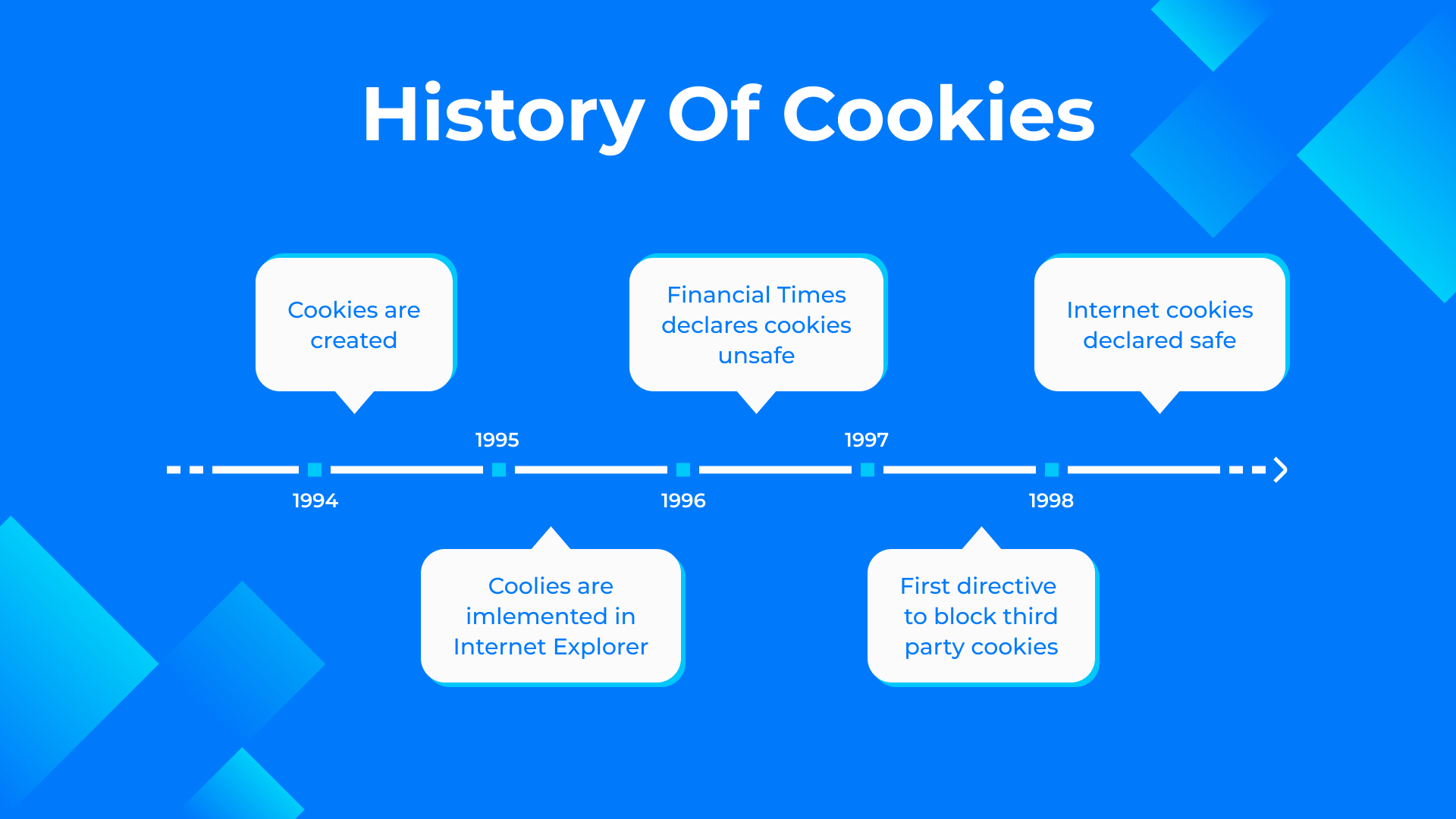
First-Party Cookies
First-party cookies are fundamental web browsing data files that significantly personalize user experiences and enhance website functionality. When a person accesses a website directly, the website places first-party cookies on their device. These cookies enable the website to remember user preferences, login information, and more. First-party cookies improve user convenience, optimize website speed, and provide a tailored browsing experience.
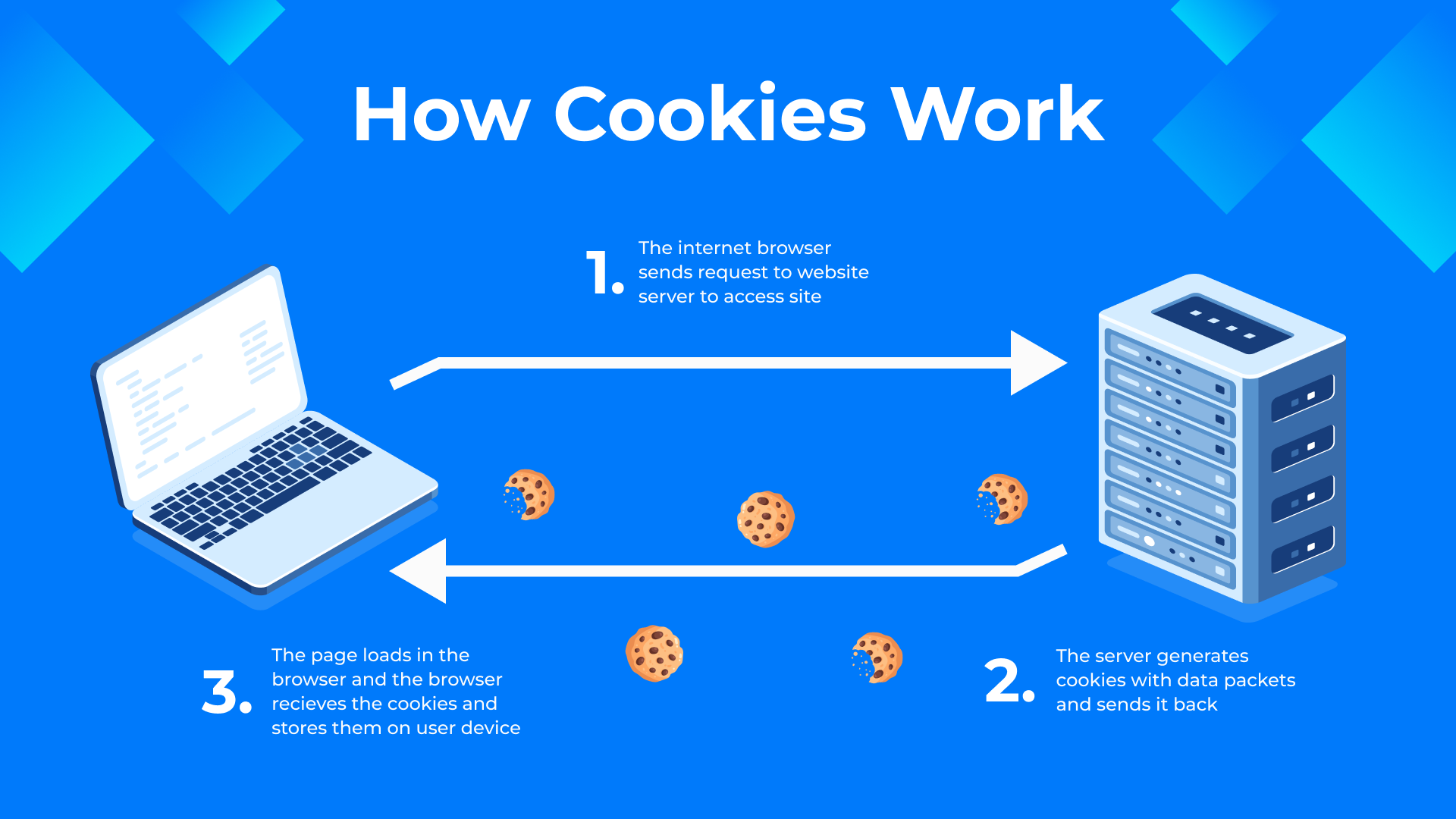
What Is The Process Of Creating First-Party Cookies?
When a user visits a website, creating first-party cookies is relatively simple. The website sends a small text file called a cookie to the user’s browser. This cookie is then stored on the user’s device by the browser. Inside the cookie, the website includes information it wants to remember, such as user preferences, login details, or browsing activity. Upon the user’s return to the website, the browser retrieves the stored cookie and transmits it back to the website. This enables the website to identify the user and deliver a personalized experience by utilizing the information stored in the cookie. Due to this, first-party cookies would allow websites to remember specific user settings and enhance the browsing experience during future visits.
First-Party Cookie Examples
These examples demonstrate how first-party cookies enhance user experiences and provide personalized functionality on websites.
Authentication Cookies. These cookies facilitate user authentication procedures, allowing users to remain logged in to their accounts as they browse various website pages.
Personalization Cookies. These cookies retain user preferences and settings, such as language preferences or customized layouts. They enhance the browsing experience by tailoring content to individual users.
Shopping Cart Cookies. E-commerce websites use these cookies to remember items added to the shopping cart. They allow users to navigate the site, add or remove items, and complete the purchase process smoothly.
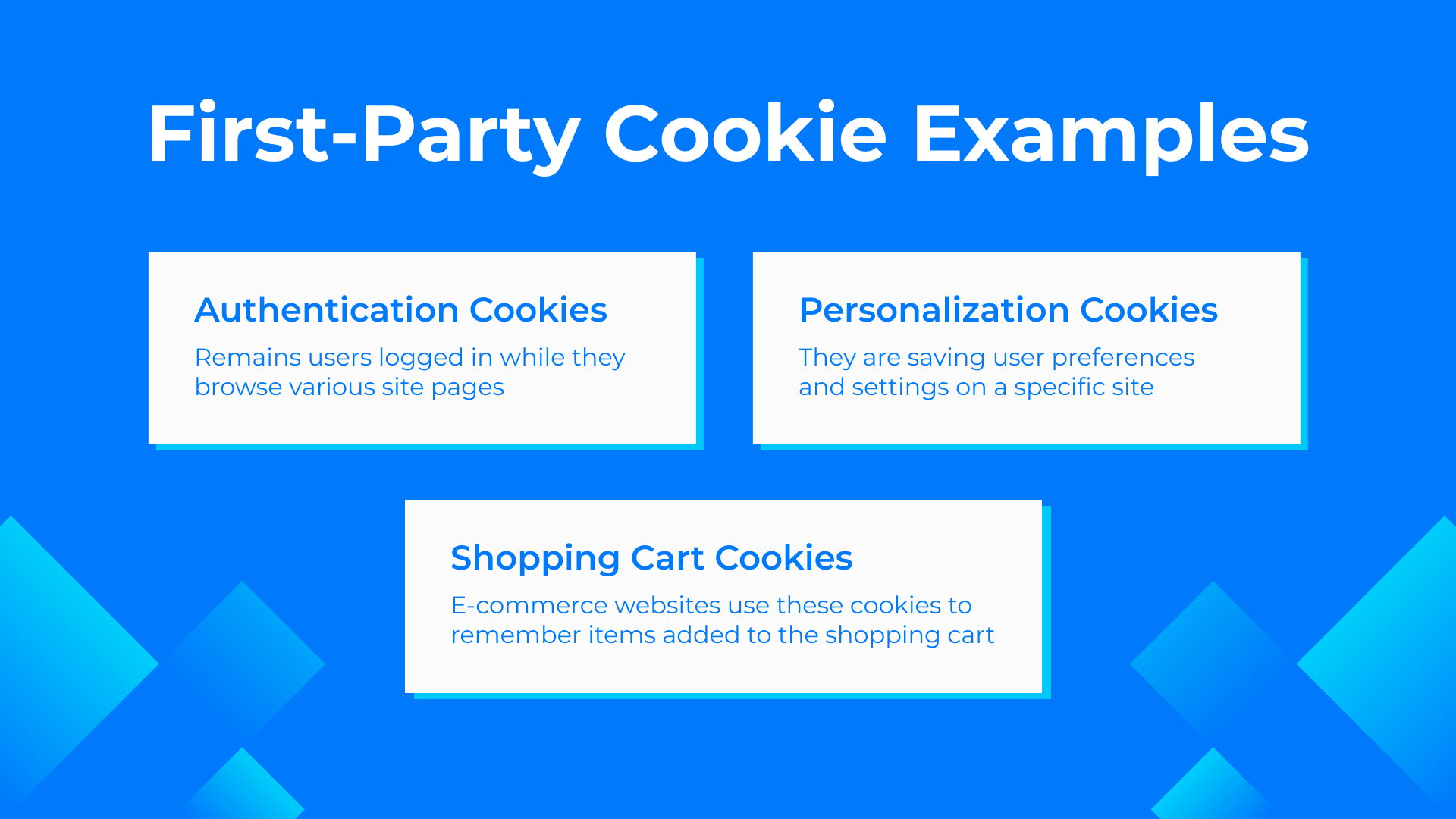
First-Party Cookies Purposes
First-party cookies serve various purposes on websites. Here is a list of their primary functions:
- Authentication
- Session Management
- Shopping Cart Management
- Advertisements
- User Behavior Tracking
Third-Party Cookies
Third-party cookies are data files generated by domains or websites that differ from those users actively browse. They are commonly established by external entities, including advertisers, social media platforms, and analytics providers, to monitor and record a user’s online activity across various websites. In contrast to first-party cookies, which originate from the website directly visited by the user, third-party cookies facilitate the collection of information on a user’s browsing behavior, preferences, and interests.
What Is The Process Of Creating Third-Party Cookies?
When a user visits a website containing content from a third-party domain, such as ads or social media plugins, the website generates third-party cookies associated with that domain. The domain requests the user’s browser to set a cookie on their device. The browser stores this third-party cookie containing information about the user’s browsing behavior and preferences. When the user visits other websites with content from the same third-party domain, the browser returns the stored cookie, allowing the domain to recognize the user and track their activity across sites. This enables the third-party entity to collect data for targeted ads, website analytics, and user profiling.
Third-Party Cookie Examples
In online tracking and advertising, various third-party cookies gather user data, enabling personalized experiences and targeted advertisements across multiple websites.
Social Media Cookies. Social media platforms use third-party cookies to provide social sharing features and to track user interactions with social media content embedded on websites.
Retargeting Cookies. Retargeting or remarketing cookies display personalized ads to users who have previously visited a website. These cookies track users and serve relevant ads to encourage them to revisit the site or complete a desired action.
Cross-Site Tracking Cookies. These cookies track users’ activity across multiple websites to create a comprehensive profile of their interests and behavior. Marketers often utilize this information for targeted advertising or user profiling purposes.
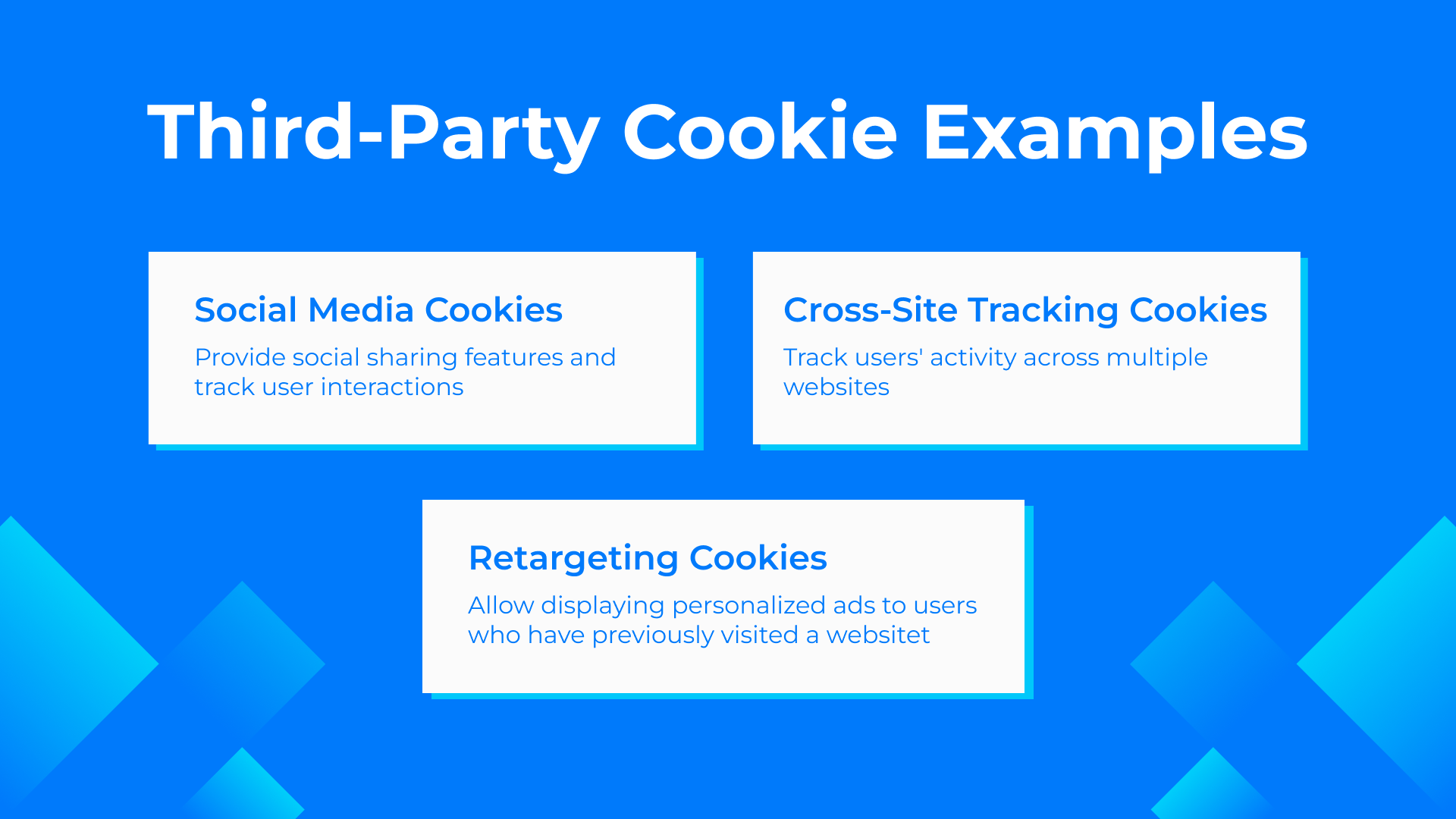
Third-Party Cookies Purposes
Advertisers frequently use third-party cookies for a wide range of purposes:
- Targeted advertising
- Retargeting and remarketing
- Social media integration
- Analytics
- Cross-site tracking
Third-Party Cookies vs. First-Party Cookies
The difference between third-party and first-party cookies entails understanding the creators of the cookies, their usage, and the entities with the ability to read them.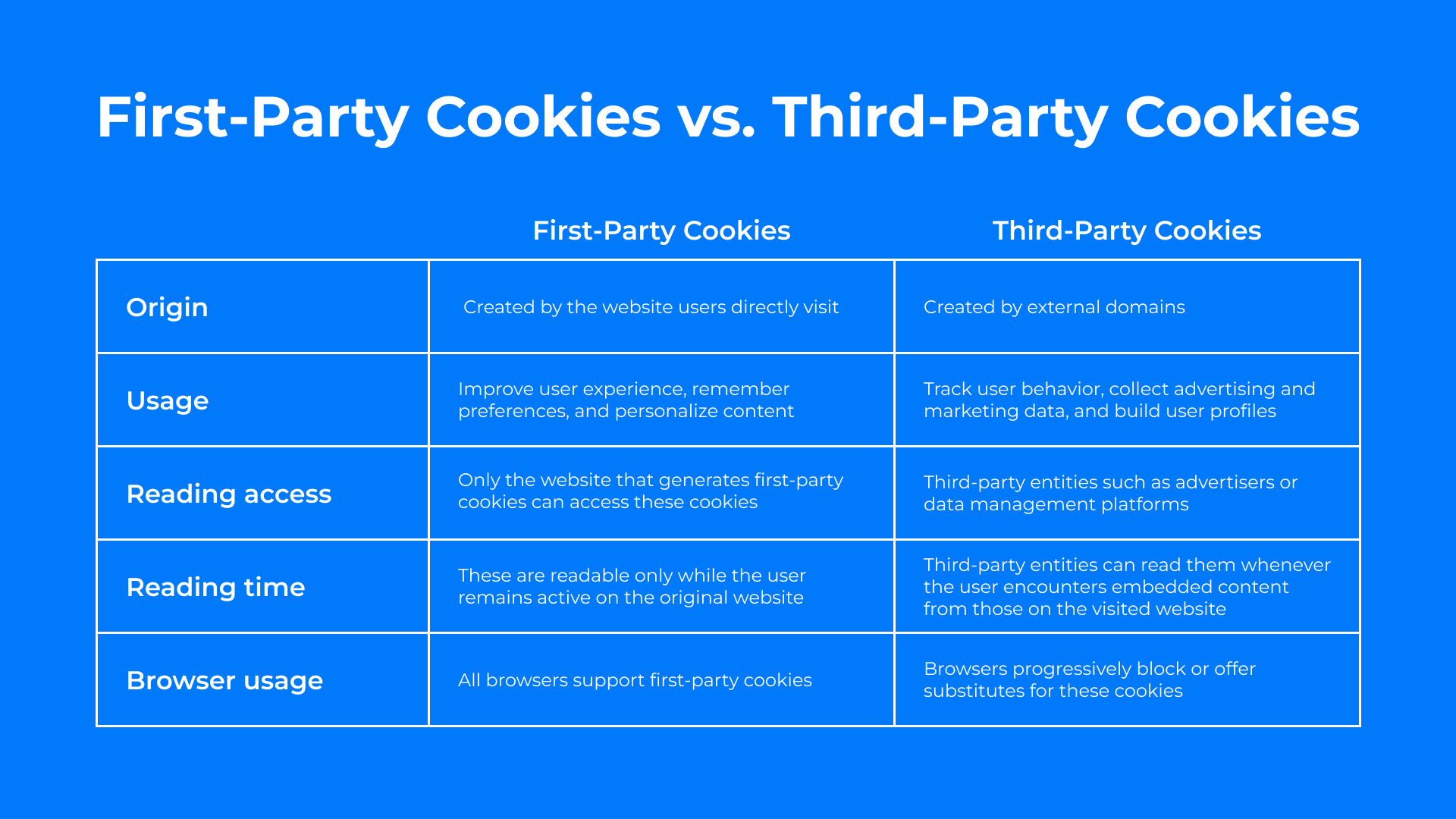
Origin. The website users directly visit and interact with creates first-party cookies, while external domains embedding content on the visited website generate third-party cookies.
Usage. Within the context of the website, first-party cookies serve various purposes. They improve user experience, remember preferences, and personalize content. Third-party cookies are employed across multiple websites to track user behavior, collect advertising and marketing data, and build user profiles.
Reading access. Only the website that generates first-party cookies can read them, accessible solely within that website’s domain. In contrast, the domain that generates third-party cookies can read them. Consequently, third-party entities other than the visited website, such as advertisers or marketers, can access and read these cookies.
Reading time. First-party cookies are readable only while the user remains active on the original website. These cookies are associated with the specific website the user directly interacts with. In the case of third-party cookies, external domains can read them whenever the user encounters embedded content from those domains on the visited website. These cookies extend their reach beyond the original website and are accessible to the domains that have placed them.
Browser usage. All browsers support first-party cookies, and browsers provide users with tools to manage and reject these cookies. On the contrary third-party cookies were once supported by all browsers. Nevertheless, there has been a notable change as browsers progressively block or offer substitutes for these cookies.
Second-Party Cookies. Does it exist?
Second-party cookies are web tracking technology that involves data exchange between two trusted parties, like websites or organizations, for targeted advertising and personalized user experiences. Unlike third-party cookies, which come from external domains, second-party cookies are established between direct partners, enabling sharing of specific user data and browsing behavior across websites.
Second-party cookies enable the parties involved to leverage shared data for various purposes. For instance, a retail website might collaborate with a related brand to share customer insights and target advertising campaigns more effectively. By exchanging second-party cookie data, both parties can better understand their shared customer base and tailor their marketing efforts accordingly.
While second-party cookies have the potential to revolutionize targeted marketing and enhance user experiences, it’s important to note that their usage is less widespread and commonly known than that of third-party cookies.
Server-Side Cookies vs. Client-Side Cookies
Client-Side Cookies
When we talk about client-side cookies, we mean cookies created and managed using a programming language like JavaScript. These cookies are saved on the user’s device, such as a computer or smartphone, and retain the user’s interaction with a website. For example, they can store preferences, login information, or items added to a shopping cart. The user’s web browser handles client-side cookies.
Server-Side Cookies
On the other hand, programming languages such as NodeJS, PHP, or Python, which operate on the server, handle the creation and management of server-side cookies. These cookies are stored on the server rather than on the user’s device. They serve functions like webpage rendering, database operations, user authentication, and push notification delivery. The user’s browser does not directly access or modify server-side cookies. Instead, the server manages them.
Future of Cookies
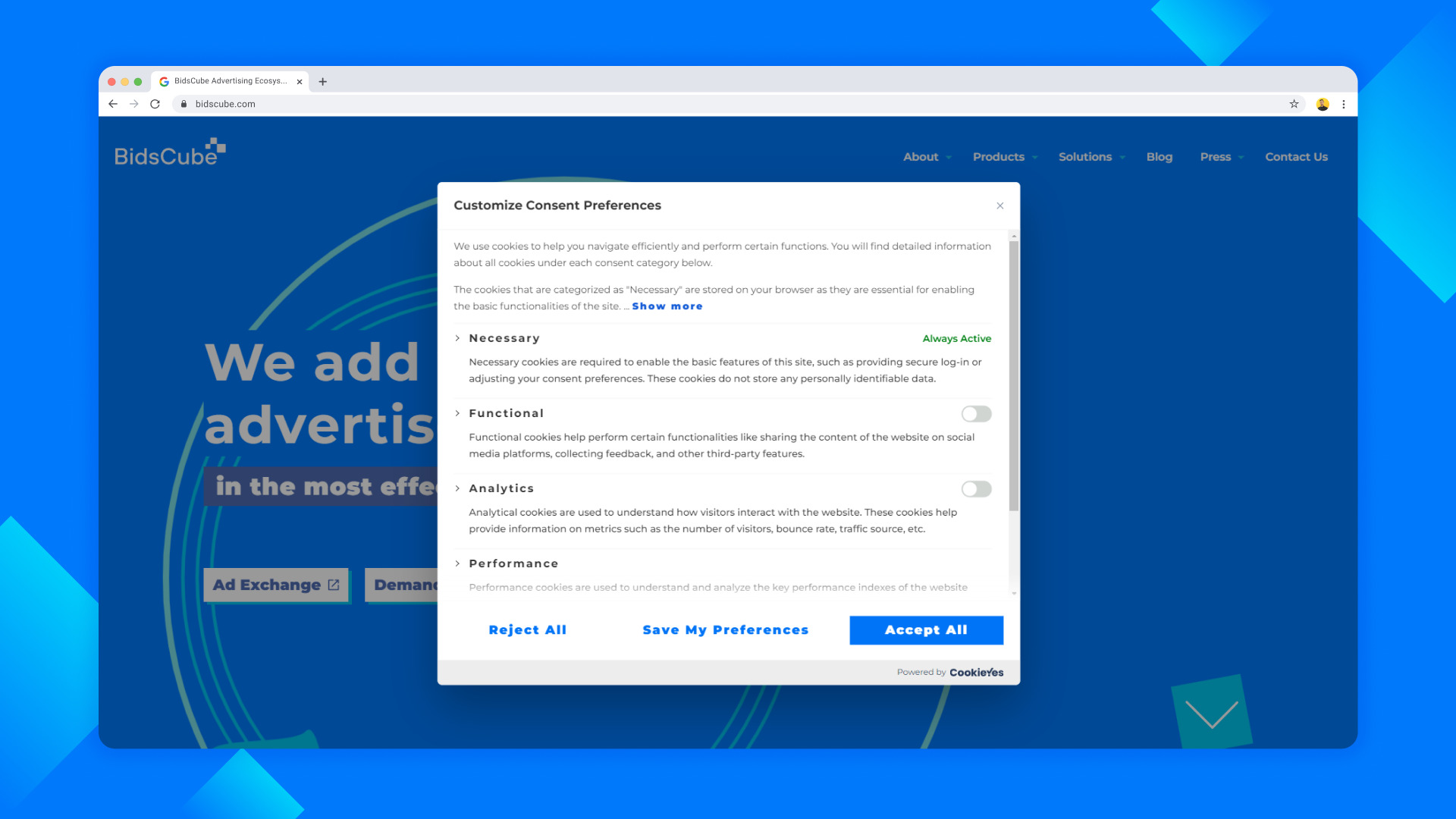
As we approach the end of the cookie era, the internet faces the challenge of adapting to the forthcoming changes. The primary focus lies in safeguarding user security. Website owners must make necessary adjustments to their practices, such as exploring alternatives to relying on cookies for login sessions, such as adopting universal IDs or other suitable methods. In addition, marketers need to adapt by implementing first-party data collection techniques and reevaluating their long-standing strategies. While alternative technologies still require further refinement, promising new solutions emerge regularly. To prepare for a future devoid of cookies, companies should enthusiastically embrace alternative identifiers and initiate the transition promptly.
Summary
Cookies play a crucial role in digital advertising and user tracking, but with increasing privacy concerns, the era of third-party cookies is ending. Websites directly visited by users create first-party cookies and enhance user experiences by remembering preferences and login information. External entities generate third-party cookies and track user activity across websites for targeted advertising and user profiling. Second-party cookies involve data exchange between trusted partners for personalized marketing. The user’s browser manages client-side cookies, while the server handles server-side cookies. As cookies face challenges and privacy regulations, businesses must adapt by exploring alternative technologies and implementing first-party data collection techniques.
Our tech staff and AdOps are formed by the best AdTech and MarTech industry specialists with 10+ years of proven track record!

Key Takeaways
- Cookies play a crucial role in digital advertising and tracking, but they face challenges due to privacy concerns.
- Websites create first-party cookies and improve user experiences by remembering preferences and login information.
- Third-party cookies generated by external entities track user activity for targeted advertising and profiling.
- Businesses must adapt to the end of third-party cookies by exploring alternative technologies and implementing first-party data collection methods.
- Companies should embrace alternative identifiers and promptly transition to prepare for a future without cookies.

